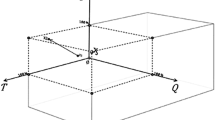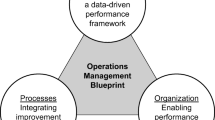Abstract
Metallurgical accounting in the mineral processing industry transforms accumulated process data, including flow rates and assays, into a coherent information format. This is used to rapidly provide production reporting and key performance indications. Comprehensive and coherent data must be a component of any system expected to accomplish reconciliation in the mass-balancing process. Quality issues are thus improved with such desired methods via a mass-balancing engine utilizing the results of measurements acquired by various on-line sensors, analyzers and sophisticated laboratory equipment. Metallurgical accounting, when accomplished through such an engine, provides high-value information in a simple, straightforward and simplified manner. Exceptional utility is then transparently available to authorized personnel for access to metallurgical accounting reports, production reports, mass balance results, performance indicators, and so on. This paper discusses how such information can be used to “drill down” into each result set by consulting the data hierarchy to evaluate and validate calculations and input data used to produce the specific results being queried. The power of such a system resides in the full and true integration of all production and laboratory data. What is integrated are the data thus acquired via a single user interface, a single database, a single configuration tool, etc. From this comes the derivation of contextual information and its maintenance. It is possible to reduce metallurgical accounting and production reporting from possibly hours or even days to a matter of minutes. The result is maximization of information reliability and availability from masses of otherwise discrete and difficult to access key data.
Similar content being viewed by others
References
Hodouin, D., and Everell, M.D., 1980, “A hierarchical procedure for adjustment and material balancing of mineral processing data,” Int. J. of Mineral Processing, 7, pp. 91–116.
Hodouin, D., Kasongo, T., Kouamé, E., and Everell, M.D., 1981, “An algorithm for material balancing mineral processing circuits — Application to comminution, desliming and flotation circuits,” CIM Bulletin, September, pp. 123–131.
Hodouin, D., and Flament, F., 1989, “New developments in material balance calculations by the mineral processing industry,” Preprint 89-147, SME Annual Meeting, Las Vegas, Nevada.
Flament, F., Labranche, M., and Fradette, L., 2001, “Data validation in a context of data reconciliation,” CIM 2001, Quebec City, Paper TUPM4-110.
Hodouin, D., Flament, F., and Bazin, A., 1988, “Reliability of material balance calculations — A sensitivity approach,” Minerals Engineering, 2 (2), pp. 157–170
Hodouin, D., and Flament, F., 1991, “Influence of data collection and conditioning strategies on the significance of performance indices in mineral processing plants,” Proceedings of the International Symposium: Evaluation and Optimization of Metallurgical Performance, SME/AIME, Chapter 19, pp. 195–208.
Author information
Authors and Affiliations
Rights and permissions
About this article
Cite this article
Flament, F., Mound, M.C., Colbert, C. et al. Practical integrated metallurgical accounting solutions for supporting production decisions. Mining, Metallurgy & Exploration 21, 1–8 (2004). https://doi.org/10.1007/BF03403295
Received:
Accepted:
Published:
Issue Date:
DOI: https://doi.org/10.1007/BF03403295




